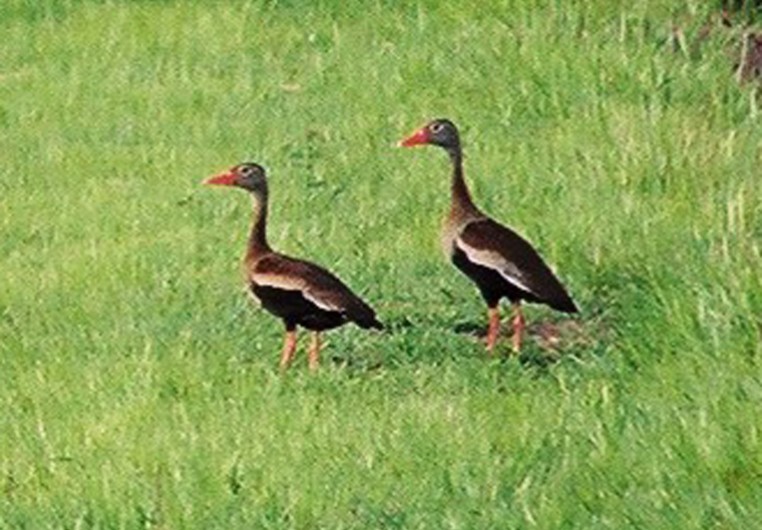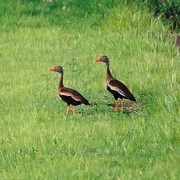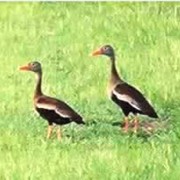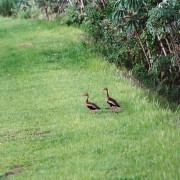Biodiversity
 Black-Bellied Whistling Duck
Dendrocygna autumnalis | Linnaeus, 1758
Black-Bellied Whistling Duck
Dendrocygna autumnalis | Linnaeus, 1758

Vocalization

Characterization: Medium to large species measuring some 48cm in length. Males and females are similar, with a gray face, black ventral portion and beak, and red feet; they display a great white spot on their wings that is only visible when they fly. The juvenile is grayish brown, including beak and feet.
Distribution: From Texas to Bolivia, Brazil, and Argentina.
Habitat: Low flooded grasses and mangroves.
Habits: Daytime and aquatic species. It is sociable and may be spotted in high concentrations.
Diet: Omnivorous, feeding on small seeds and leaves, rice, worms, insect larvae, and small crustaceans.
Breeding: It lays up to 16 eggs in a nest built in wood hollows, palm tufts or on the ground, and more than one female may sometimes lay their eggs in such nest.
In the UFRA area: This bird species had an average spatial distribution, being present in organic sugarcane fields, restored native forests, native forests, drainage ditches, and in forests in spontaneous regeneration. It is infrequent, as it was spotted only 14 times.






